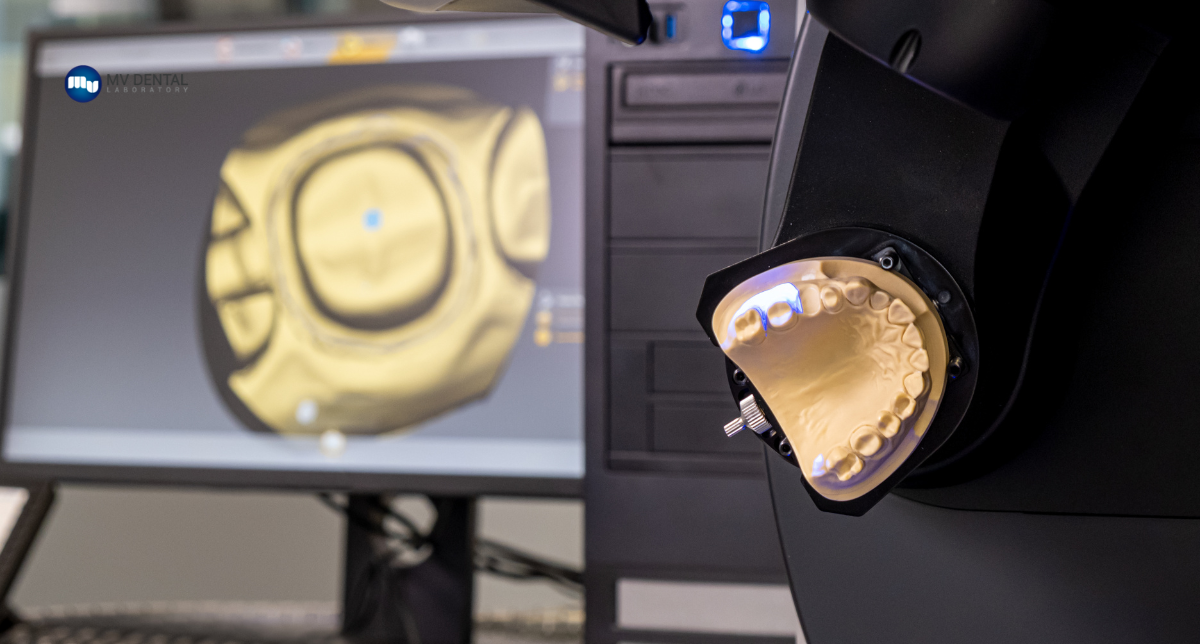The landscape of dentistry is rapidly evolving, with artificial intelligence (AI) emerging as a powerful tool for both dental practices and dental laboratories. Of course, AI is not here to replace dental practitioners and technicians but rather to empower them by automating tasks, improving accuracy, and optimising workflows.
In dental practices, AI can enhance diagnosis by analysing X-rays, CT scans, and intraoral scans. It improves treatment planning by analysing patient data leading to personalised treatment plans. And, it can answer patient questions about procedures, medication and oral hygiene via AI-powered chatbots.
In dental laboratories, AI can design dental restorations like crowns, bridges, and dentures, and optimises 3D printing processes for dental restoration.
Here's a breakdown of how AI is impacting dental labs:
Say Hello to Automated Design
Imagine sending a scan and getting a crown design back in under two minutes – that's the magic of AI! Softwares like 3Shape Automate learn from vast datasets of existing designs and incorporate the expertise of experienced technicians. This ensures consistent quality and minimises the risk of human error in the design process. The result? Consistent, high-quality designs that free up lab time for complex cases.
Examples: 3Shape Automate, ExoDent Design by Dentsply Sirona (for implant restorations)
Optimised AI-Powered Manufacturing
AI optimises 3D printing processes and reduces material waste by suggesting the most efficient use of materials for each restoration. Software like Materialise Magics analyses models and suggests support structures, printing parameters, and material usage, minimizing waste and production costs.
Identifying the most suitable 3D printing settings for each material and restoration type leads to faster printing times and more accurate results.
Examples: Materialise Magics, InLab by Sirona (includes AI-powered printing optimization)
Improved Quality Control
AI can catch flaws that might be missed by the human eye, leading to early detection of defects, fewer remakes and improved overall quality.
InLab by Sirona, for example, a comprehensive dental lab software suite that includes AI-powered quality control features, analyses 3D scans of restorations and identifies potential issues like undercuts, imperfections, or deviations from the original design.
What the Future Holds: Supercharged Workflows
Yes, AI is poised to revolutionise dental labs beyond automation. Imagine seamless integration with CAD/CAM and robotics for ultra-efficient workflows. Beyond that, AI could personalise restorations based on a patient's unique bite force and jaw anatomy. New, AI-designed materials could even emerge, boasting superior strength, durability, and aesthetics.
Marc, Co-founder at MV Dental Laboratory says, “From what we are seeing in our lab, this technology is allowing our skilled team to focus on complex cases without compromising the quality of a single unit restoration…As AI technology continues to evolve, we can expect even more innovative applications to emerge, shaping the future of dental prosthetics and patient care.”
